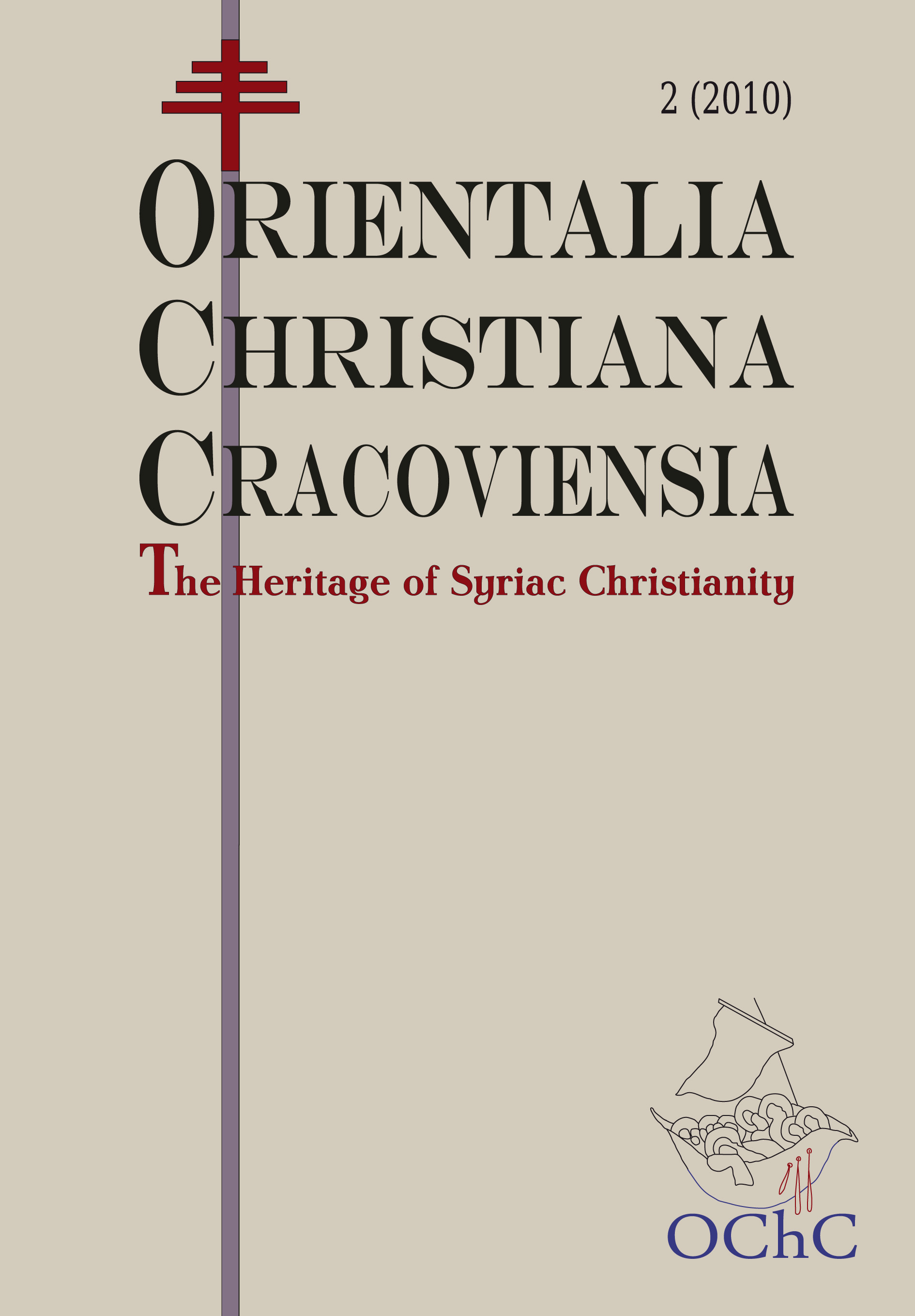The School of Nisibis: an ancient religious community?
DOI:
https://doi.org/10.15633/ochc.1013Słowa kluczowe:
Nisibis, Christianity school, theologyAbstrakt
For the first modern scholars, the School of Nisibis constituted a primitive form of what they believe to be an early university. For this reason the School became known as a “theological academy” and many people still think that the community at Nisibis should be understood as a school similar to our modern institutions of advanced education, The trouble with this view is its anachronism. It can be very deceptive to reduce past cultural phaenomena to what we know from our own times. The aim of this paper is to place the School of Nisibis in the context of similar ancient institutions and thus properly understand its idea of education and the spiritual formation it offered to its disciples.
Bibliografia
Becker A. H., Fear of God and the Beginning of Wisdom. The School of Nisibis and Christian Scholastic Culture in Late Antique Mesopotamia, Philadelphia 2006.
Burkert W., Craft versus Sect. The Problem of Orphics and Pythagoreans, [in:] Jewish and Christian Self-Definition, vol. 3: Self-Definition in the Graeco-Roman World, ed. by B. F. Meyer, E. P. Sanders, London 1981, pp. 1–22.
A Greek-English Lexicon, compiled by H. G. Liddell and R. Scott, Oxford 1996.
Lampe G. W. H., A patristic Greek lexicon, Oxford 1968.
Macina R., L’homme à l’école de Dieu. D’Antioche à Nisibe. Profil herménetique, théologique et kérugmatique du mouvement scoliaste néstorien, „Proche-Orient Chrétien” vol. 32 (1982), pp. 87–124, 263–301; vol. 33 (1982), pp. 39–103.
Pigulewska N. W., Kultura syryjska we wczesnym średniowieczu, Warszawa 1989.
Sources for the Study of the School of Nisibis, translated with an introduction and notes by A. H. Becker, Liverpool 2008.
The Statutes of the School of Nisibis, edited, translated and furnished with a commentary by A. Vööbus, Stockholm 1961.
Taylor J., Pythagoreans and Essenes. Structural Parallels, Paris 2004.
Uciecha A. , Ascetyczna nauka w „Mowach” Afrahata, Katowice 2002.
Vermes G., The Complete Dead Sea Scrolls in English, London 2004.
Vööbus A. , The Institution of the Benai Qeiama and Benat Qeiama in the Ancient Syrian Church, „Church History” vol. 30, no 1 (1961), pp. 19–27, http://dx.doi.org/10.2307/3161262.
Zayd S. A., Ihidayutha. A study of the life of singleness in the Syrian Orient, from Ignatius of Antioch to Chalcedon 451 A. D., Oxford 1993.
Pobrania
Opublikowane
Numer
Dział
Licencja
Prawa autorskie (c) 2015 Adam Izdebski

Praca jest udostępniana na licencji Creative Commons Attribution-NonCommercial-NoDerivatives 3.0 Unported License.
Twórca oświadcza, że przysługują mu prawa autorskie do utworu i że nie są ograniczone w zakresie objętym niniejszym oświadczeniem oraz że utwór jest dziełem oryginalnym i nie narusza praw autorskich innych osób.
Twórca zezwala Uniwersytetowi Papieskiemu Jana Pawła II w Krakowie na nieodpłatne, niewyłączne i nieograniczone w czasie korzystanie z utworu, to jest:
- utrwalanie i zwielokrotnianie: wytwarzanie egzemplarzy utworu techniką drukarską, reprograficzną, zapisu magnetycznego oraz techniką cyfrową;
- obrotu oryginałem albo egzemplarzami, na których utwór utrwalono (wprowadzanie do obrotu, użyczenie lub najem oryginału albo egzemplarzy, publiczne wystawienie, wyświetlenie, a także publiczne udostępnianie utworu w taki sposób, aby każdy mógł mieć do niego dostęp w miejscu i w czasie przez siebie wybranym);
- włączenie utworu w skład utworu zbiorowego;
- udzielanie przez Uniwersytet Papieski Jana Pawła II w Krakowie sublicencji Creative Commons Uznanie autorstwa-Użycie niekomercyjne-Bez utworów zależnych 3.0 Polska
Uniwersytet Papieski Jana Pawła II w Krakowie udostępnia utwór na Platformie Czasopism należącej do uczelni, na licencji Creative Commons Uznanie autorstwa-Użycie niekomercyjne-Bez utworów zależnych 3.0 Polska. Tym samym uprawnia wszystkich zainteresowanych do korzystania z utworu pod następującymi warunkami:
- zostanie podany autor i tytuł utworu,
- zostanie podane miejsce publikacji (tytuł czasopisma i adres internetowy do oryginalnie opublikowanego utworu),
- utwór będzie dystrybuowany w sposób niekomercyjny,
- nie będą tworzone utwory zależne.

